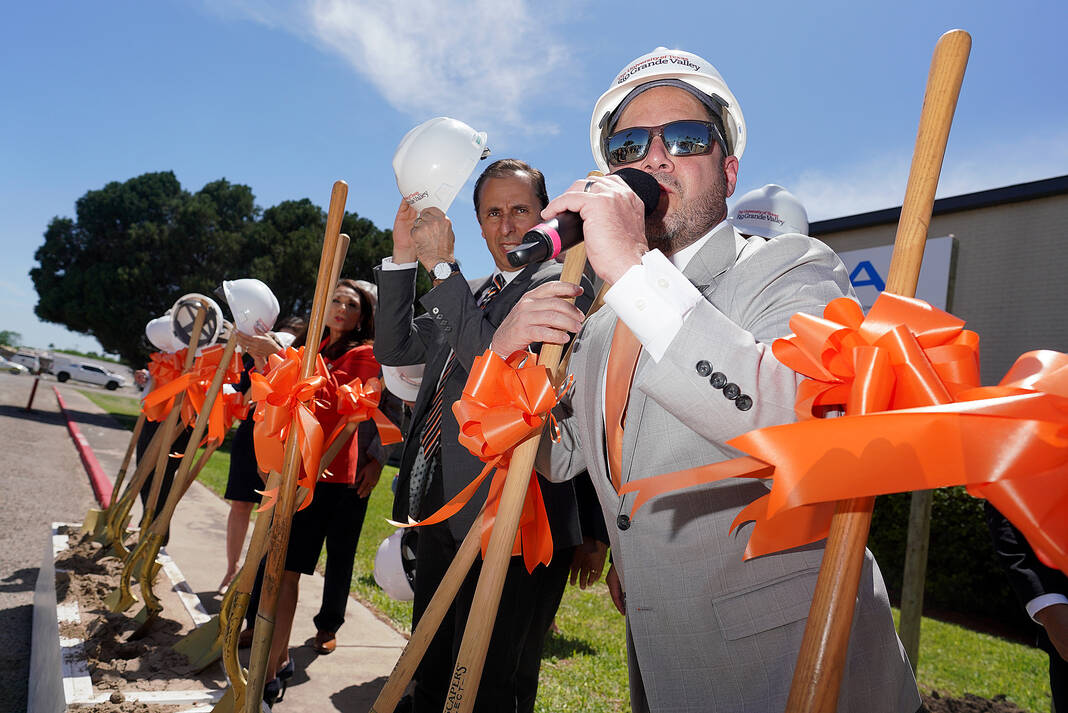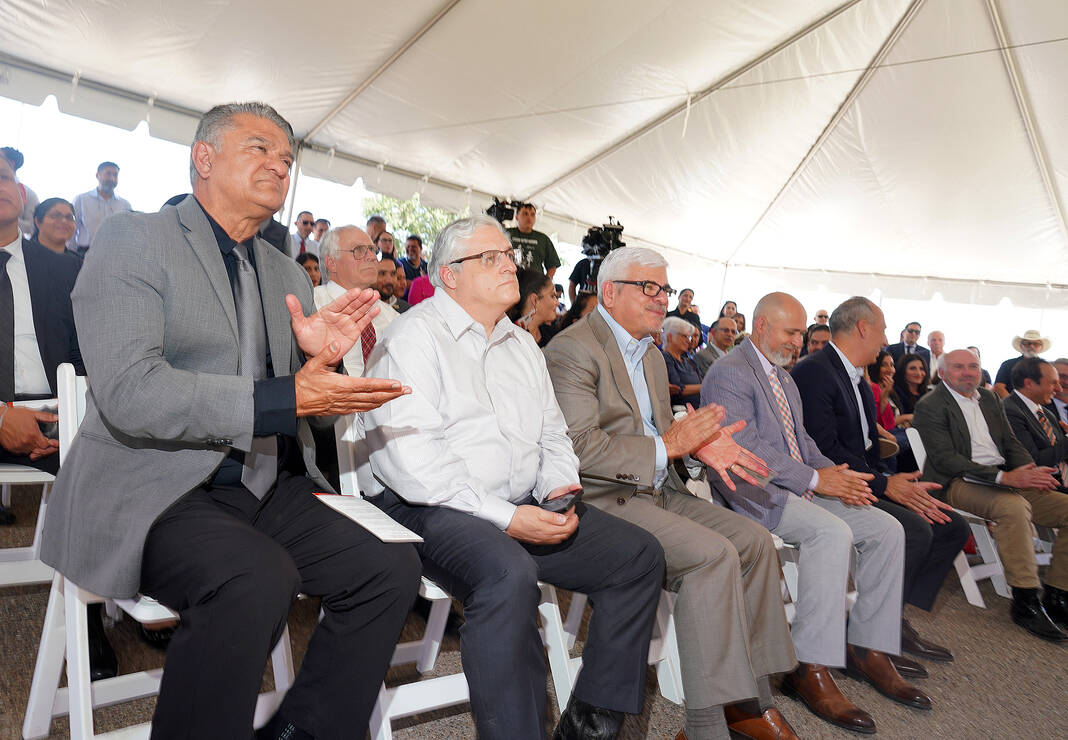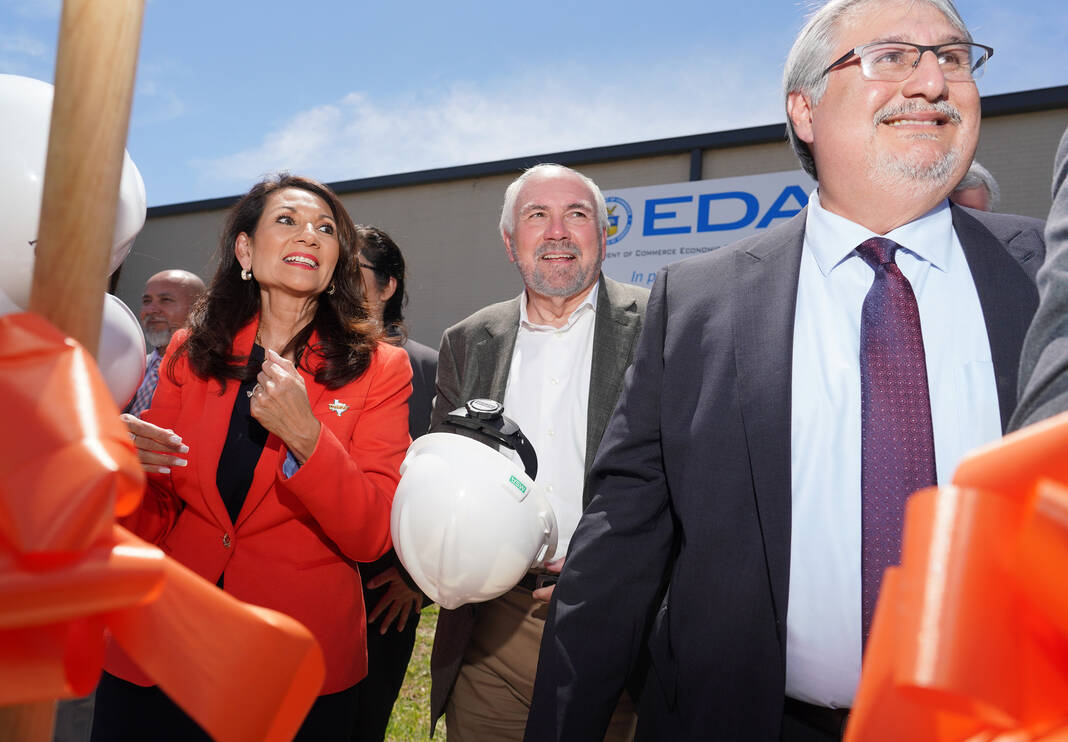|
Only have a minute? Listen instead
Getting your Trinity Audio player ready...
|
EDINBURG — The University of Texas Rio Grande Valley will be renovating the Community Engagement & Student Success Building, which will be renamed, with around $10 million to feature six new office centers, research labs and business incubators.
The renovated building — located at 1407 E. Freddy Gonzalez Drive in Edinburg, off of Interstate 69-C — will be named the W.E.R.C Complex which stands for workforce, economy, research and community. The building is currently home to eight university offices.
The investment aims to significantly transform the workforce, research and economic landscapes of the Valley.
The building will be home to the Apex Accelerator Center, the Data & Information Systems Center, the Entrepreneurship & Commercialization Center, the Professional Education & Workforce Development Center, the Small Business Development Center and the Veterans Business Outreach Center, alongside the research laboratories and business incubators.
The ambitious project was unveiled at a ceremony Thursday in front of the building, with federal, state and local officials at the ceremony.

Ron Garza, UTRGV associate vice president for Workforce and Economic Development, said it is expected to take 12-15 months to complete with about two years of planning already being put into it.
Garza said after the ceremony that funding for the project comes from $6 million internally from UTRGV, a $2.4 million grant from the U.S Department of Commerce Economic Development Administration and with help from U.S. Rep. Monica De La Cruz, R-McAllen, who secured $500,000 specifically for a dry room in the research labs.
“I can’t understate it by saying renovation, it is going to be entirely transformed,” he said. “We’re moving about eight different departments so that there’s a better operational workflow and then on top of that, we’re adding new space. Specifically for something called business incubation. It’s an incubator facility, and then in alignment with the incubator we’re doing research laboratories.”
Giving MyRGV.com an impromptu tour of the facility and how it will look in a little over a year, Garza said it is about 50,000 square feet of reconfigured space for the labs and incubators.
“We’re trying to create new high paying jobs for the entire community, but especially for the graduates of UTRGV,” he said. “Obviously a lot of our top talent, a lot of our graduates move away for these high wage jobs. We need to create more high wage job opportunities here. So facilities like this are what incubates those opportunities and what’s really important. This is one facility in a network of other facilities that we already have across the Valley.”

Can Saygin, senior vice president for Research and Dean of the Graduate College, said these improvements will help UTRGV become a Carnegie Tier 1 research university and help the local workforce obtain high paying jobs.
Saygin said one of his main goals in this project is putting applied research into workforce development so it can create a pipeline of high paying jobs.
“So that with the technology we can actually bring in different varieties of industries to the Valley,” he said. “Then industry starts coming, they bring their own supply chain partners, and suddenly you see exponential growth in the quality of life and its impact in the Valley and in South Texas.”
He added one of the research laboratories will be geared toward manufacturing but the labs will be like a generic toolbox that can work with businesses such as pharmaceutical, automotive and aerospace companies.
“It has the potential to attract more than one industry to the region,” Saygin said. “The technologies we’re going to have here which are heavily manufacturing … It’s connected to our doctoral programs as well. So our faculty members with doctoral students, when they do hands-on applied research, it’s easy to demonstrate to the industry its value.
“So we hope that we’ll be able to bridge the gap in between this pure, simple basic laboratory research to more applied research where the industry sees the connection.”




